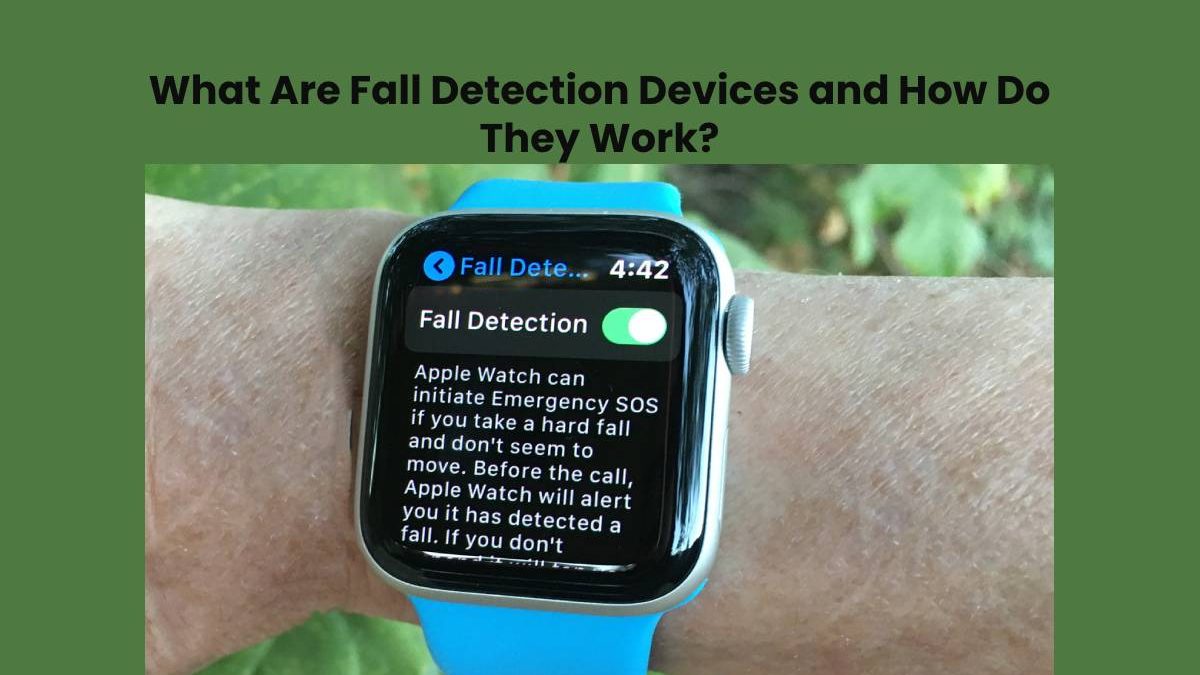What Are Fall Detection Devices and How Do They Work
Fall detection devices are not entirely accurate with the precision carried across medical alert companies. In 2015, a publication in Gerontology indicated that researchers wanted to verify the accuracy of the detectors in real life. The results showed that one detected fall failed to occur every 40 hours out of fifteen falls and one false alarm. However, companies are working on an advanced technology where the devices send fewer false alarms and accuracy in detected falls. When a system notices a fall, the operator first attempts to contact the owner before communicating with the emergency workers.
Table of Contents
What They Are
It is much safer to ensure the safety of seniors; thus, some devices come with fall detection. This is an advanced characteristic of medical alert systems that employ motion-sensing skills when the user hastily switches from a vertical position to a horizontal one. If the system spots a fall, it mechanically activates an emergency call even if the user can push the button. However, wherever the owners can function, they are advised to press the button instead of depending on the sensor. Research has shown that falls are frequent for individuals above 65 years. However, two-thirds of the people fail to report the cases, especially when they are minors. Most of the people that fall once will have such incidences frequently within the month. Accordingly, it is vital to get quality fall detectors with an alert system ensuring safety and peace for individuals. Some falls are severe, especially for those living alone. They require effective devices that are simple to alert others in case falls occur. It is easier when it happens because they can get them speedy assistance or engage medical services where demanded. This helps seniors live longer and stay active with reduced risks of falling due to the assured protection at the press of a button.
Examples of Fall Detection Sensors
Medical Guardian is a device with a customer portal that enables the owner to create a network of contacts for emergency cases to see the owner’s location and get alerts. Bay Alarm Medical device is suitable for couples that cover both under a monthly monitoring fee without any additions. Mobile Help is a valuable safety solution for most aged adults because it provides on the go, in the home, and unified systems. Medical Alert has plans entailing many wireless devices, while other companies have a limit of one device. Aloe care health includes a mobile app that helps caregivers interact with the owner and keep track of the room temperature and air quality. Get safe employs several voice-initiated buttons all over the home, making it easier for the owner because it does not require them to wear a wristband. However, for automatic fall detection, it is required that they have a wearable button.
How They Work
Most medical alert firms provide fall detection at an extra monthly fee. These devices are available to put on around the neck as a pendant. Few companies provide watches because of the lack of accuracy when the device is put on the wrist. There are several false alarms in cases where there are wrist-worn devices. The device may find difficulty differentiating an actual fall from the user’s movements. However, most companies are working to improve the bracelet technology to provide precise detection. Every medical alert system contains a contact button that the owner can activate in the occurrence of a fall or an emergency. However, individuals might be unable to press the button in some falls. In cases of seniors with dementia or those that lose consciousness after a fall, they might fail to initiate the alert systems. Thus, automatic fall detection serves the best purpose because they guarantee complete safety to the users, leaving their loved ones at peace.
Types
Fall detection devices are of three types: on-the-go systems, which contain devices that link to Wi-Fi, cellular networks, and GPS, thus guaranteeing the user’s safety. If an individual has a busy life and worries about medical emergencies such as falls, the device guarantees safety. The other device is the in-home unit, which is cost-effective and easy to use. Lastly, the combination plan contains a mobile device in the home unit. The systems enable the users to recharge their transportable devices at home while under coverage.
Features
The ideal features of the devices are discretionary involuntary fall protection and a wearable emergency call button. For instance, there are brands with medication prompts, activity, and health tracking. Another aspect of the device is a caregiver portal, which enables family members to keep track of the occurrences and update essential details such as emergency contacts. The caregiver apps help the loved ones to identify the user’s activities, which makes them feel comfortable.

